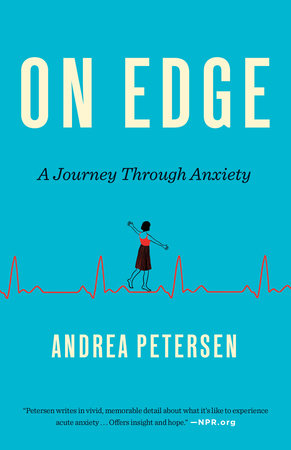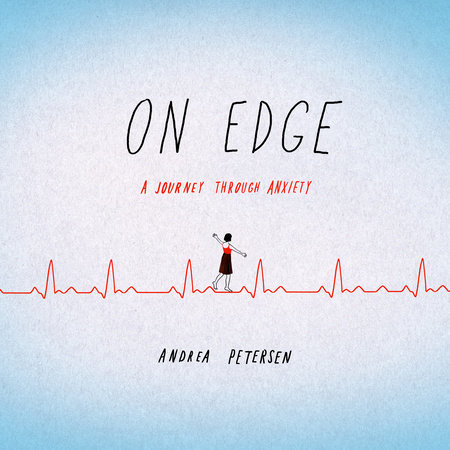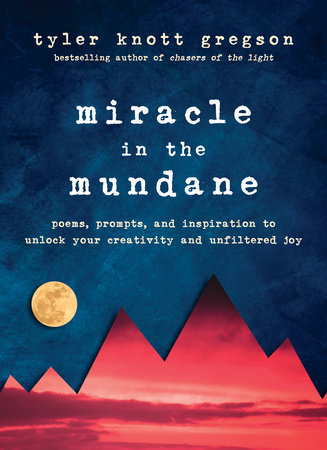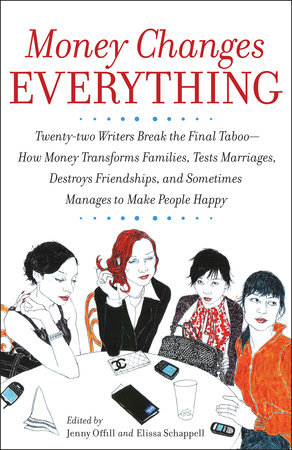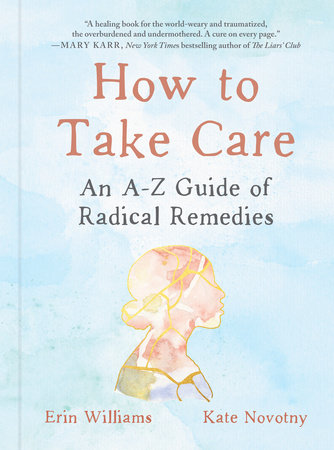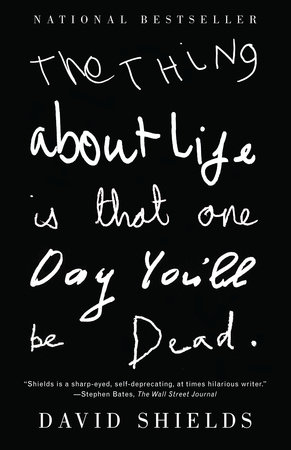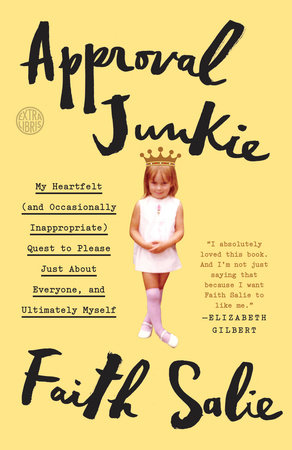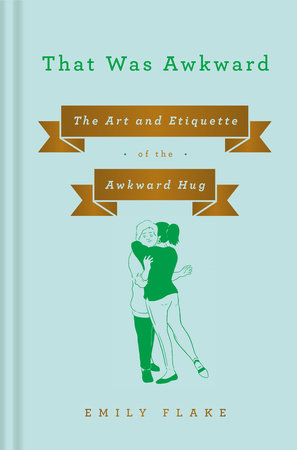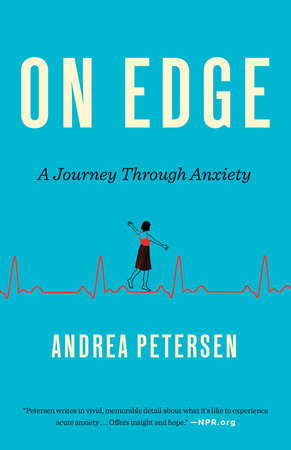

On Edge
By Andrea Petersen
By Andrea Petersen
By Andrea Petersen
By Andrea Petersen
By Andrea Petersen
Read by Andrea Petersen
By Andrea Petersen
Read by Andrea Petersen
Category: Psychology | Biography & Memoir
Category: Psychology | Biography & Memoir
Category: Psychology | Biography & Memoir | Audiobooks
-
$20.00
May 15, 2018 | ISBN 9780553418590
-
May 16, 2017 | ISBN 9780553418583
-
May 16, 2017 | ISBN 9781524750756
528 Minutes

-
$20.00
May 15, 2018 | ISBN 9780553418590
-
May 16, 2017 | ISBN 9780553418583
-
May 16, 2017 | ISBN 9781524750756
528 Minutes
Buy the Audiobook Download:
YOU MAY ALSO LIKE
Praise
“Petersen writes in vivid, memorable detail about what it’s like to experience acute anxiety… Books like [hers] offer insight and hope.”
—NPR
“Revelatory… By chronicling her own experiences with a variety of therapeutic interventions and coping mechanisms, [Petersen] sheds light on the circuitous route those with anxiety disorder travel… [Her] account is enlightening and informative.”
—Booklist
“Petersen’s thoughtful and encouraging treatise on living and thriving despite these disorders will be helpful reading for many, and her honesty opens a much-needed doorway onto a significant health problem that is often underreported but on the rise. [On Edge offers] sensitive and frank personal views on anxiety backed by substantial research and analysis of the evolution of treatment methods and drugs to alleviate symptoms.”
—Kirkus Reviews
“Deft and affecting, heartbreaking and fascinating, On Edge completely captures what it feels like to live with anxiety.”
—Bustle
“Petersen, a veteran Wall Street Journal writer covering health and psychology, deftly intercuts her own narrative with wide-angle reporting, tracing a checkered history of treatments (‘pelvic massage’ helped pave the way for early vibrators) as well as leading-edge research on genetics and neurofeedback.”
—Vogue.com
“A compelling read; it’s personally relatable to those who have had similar experiences, highly informative on an emotional and factual level to those who have not. (And, for a book about such a serious subject, it has plenty of light moments.)”
—Jezebel
“An honest memoir of [Petersen’s] 15-plus years of struggle with an anxiety disorder…Required reading for anyone working with those who have the disorder.”
—Library Journal
“To better understand anxiety as a public crisis from a private voice, read Petersen’s On Edge.”
—Yale Daily News
“In On Edge, Andrea Petersen paints a vivid picture of how anxiety has affected her work, romantic relationships, and experience as a parent. We see not only the ways in which her anxiety has held her back, but also how it has led her to live a richer, more authentic life. This brave, hopeful, sensitive account, grounded in the latest neuroscience, will be both enlightening and comforting to the millions who struggle with anxiety.”
—SUSAN CAIN, author of Quiet: The Power of Introverts in a World That Can’t Stop Talking
“With a clever mix of science and story, Petersen reveals her search for the roots of her life-long struggle with anxiety. On Edge is both moving and informative, and recommended for those who suffer for similar reasons, as well as those who are simply curious about the workings of the mind.”
—JOSEPH LEDOUX, University Professor and Professor of Neural Science at New York University; author of Anxious
“On Edge is a beautiful, often heartbreaking, often funny, always moving account of what it means to experience a degree of anxiety most of us cannot imagine. Andrea Petersen has crafted an engaging blend of memoir and science that will open your eyes—and heart—to a condition that is usually invisible, but deserves a broader spotlight. Truly a must-read for anyone who wants to understand mental illness and the effect it can have on our lives.”
—MARIA KONNIKOVA, author of Mastermind and The Confidence Game
“On Edge is a remarkable achievement—poignant, funny, illuminating, and unflinchingly honest. Petersen combines the intimacy of a memoir with the groundbreaking science that is unraveling the mystery of anxiety: a fundamentally human experience, capable of making our lives miserable but essential for our very survival. A compelling and unforgettable read.”
—JORDAN SMOLLER, professor of psychiatry, Harvard Medical School; author of The Other Side of Normal
“In this fascinating book, science reporter Andrea Petersen deftly combines an honest, wry account of her own challenges with anxiety with a thorough examination of contemporary research. On Edge will illuminate the subject for anyone who has wrestled with anxiety.”
—GRETCHEN RUBIN, author of The Happiness Project and Better Than Before
“This remarkable and beautifully written description of Andrea Petersen’s lifelong journey with anxiety combines an account of her personal experience with a description of up-to-the-minute research describing what we know about anxiety and its treatment. Everyone dealing with anxiety—the common cold of mental disorders—will benefit from the important information in this entertaining and erudite reflection on coping with the burden of anxiety.”
—DAVID H. BARLOW, professor of psychology and psychiatry emeritus, Boston University; founder and director emeritus, Center for Anxiety and Related Disorders
“This story of resilience in the face of enormous challenge powerfully illustrates Andrea Petersen’s pathway to recovery from mental illness. Eminently readable and at times controversial, Andrea’s story is a beacon in the darkness for those living with anxiety disorders in silence. Stories like hers, shared openly, can change lives by reducing the stigma and discrimination that still surrounds mental illness.”
—FORMER FIRST LADY ROSALYNN CARTER, co-founder, The Carter Center
“Andrea Petersen raises the bar for anyone attempting to explain the complex science of the anxious brain, I was fascinated by the candid, painful, often humorous account of her own struggle and her quest for the best information about anxiety.”
—KAREN CASSIDAY, president of the Anxiety and Depression Association of America
“For those with a family member, friend or employee who is battling with this invisible demon, On Edge can shed light down the dark cavern and help them support their loved ones when ‘uncertainty far too easily morphs into inescapable catastrophe.’”
—Shelf Awareness






